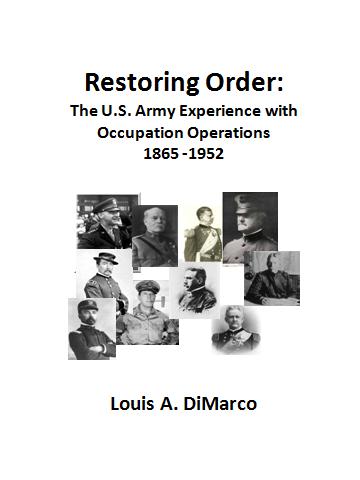
M60A3 Tanks roll through a German Village during a REFORGER Exercise. For more than 50 years a common site in Germany.
A recent newspaper article from Europe described the departure of the last 22 US Army M1 Tanks from the European Military Theater. This is truly a historic event. It may be the final curtain on the play that began with the deployment of literally thousands of US Army tanks to Europe in the midst of WWII. In many ways those tanks never returned to the US. They were just updated, replaced, reorganized, and realigned, first as part of the short hot war that was World War II, and then as part of the long Cold War. So, the departure of the last US tanks from Europe represents recognition of the final end to the US participation in both wars.
However, some observers see the departure of US armor from Europe in a more contemporary light. Rather than it representing the close of a historical era, they see it representing the beginnings of a new era. What is that new era? It could be several thing. Perhaps it’s the end of the importance of Europe to US foreign policy –representing the final turn away from Europe that began two decades ago. Europe may not be worthy of the cost of stationing US armor forces (the US’s most costly ground combat system), and those forces may be more effectively and efficiently used either in another theater (Asia or the Middle East) or centrally located for global deployment in the continental US.
Another new era that this event may represent is the withdraw of the US from a commitment to global stability. The forward basing of US heavy forces since WWII (in Korea and Germany, but also in the Middle East) has represented a firm commitment of the US to enforcing stability in those critical regions. Nothing speaks to firm commitment more than the permanent basing of US heavy ground forces. Will we soon see the last of US heavy forces loaded out of the Middle East? Will the tiny US heavy force commitment to Korea soon be terminated? This can easily be done and rationalized by the fact that US airpower can quickly make up the combat power of the ground based heavy force. But US airpower is ephemeral. There one day, and easily gone the next. Sea and air power, because of their incredible mobility, do not make the same firm permanent strategic commitment to a region as heavy ground forces –armor. It may well be that the day of firm strategic commitments overseas are over.
Another new idea that the redeployment of US armor from Europe may represent is that we have turned the corner into a new era of warfare. Warfare of the future will not require the large heavily armored land forces that are legacies of World War II. Instead, future war will be dominated by airpower and guided by digital information based technology. Land forces will be a combination of small highly mobile wheeled platforms coordinated with even smaller special operations ground forces. Tanks operating in that environment are nothing more than big slow easy to identify targets for precision munitions delivered by a variety of different sources including drone aircraft piloted by humans on a different continent.
So, observers who follow military affairs probably have no trouble agreeing that the departure of the last US heavy tanks from Europe is a remarkable historical event. But, there is likely significant disagreement regarding why the event is remarkable. The optimist view is that it represents the advancement of the US and its armed forces into the 21st Century with a new and forward thinking mindset and with a technological edge that represents American military preimenance for decades to come. A more pessimistic view might see this event as a retreat from a global foreign policy and an unwillingness to invest US military resources in expensive technologies that require US national political commitments.


 His comrades in the Army would be first to admit that he has never really been the stiff-upper-lip sort.
His comrades in the Army would be first to admit that he has never really been the stiff-upper-lip sort.



